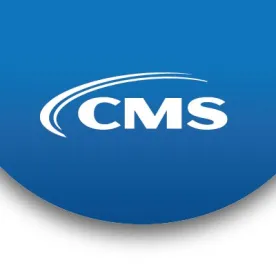On January 13, 2021, Brad Smith, the fourth director of the Center for Medicare and Medicaid Innovation (the “Center”), published an article[1] in the New England Journal of Medicine in which he evaluates the Center’s performance over its decade-long history against the Center’s stated goals – to decrease health care spending and improve health care quality. Smith describes an underwhelming showing from the Center and puts forward several key lessons from the Center’s past performance as a way to inform and improve future performance.
Ten Years With Very Little to Show
Over the past ten years, the Center has used $20 billion to launch 54 payment models – all payment models targeting various areas of the health care sector with almost 1 million participating health care providers and approximately 26 million covered patients. Despite this financial outlay and scope, most of the Center’s models have operated at a net loss without realizing any savings for the Medicare and Medicaid programs. Some of these poor-performing models are on track to realize billions of dollars in losses over the course of their respective testing periods.
In reviewing the list of such poor-performing models, it is clear that a payment model’s popularity does not necessarily correlate with financial success. For example, the popular Bundled Payments for Care Improvement model and the Advanced and Comprehensive Primary Care Plus model are significant standouts for their poor financial performance. Only a few of the Center’s payment models – notably, the Pioneer ACO, Home Health Value-Based Purchasing, and Maryland All-Payer models – have generated healthcare program savings with only the Maryland All-Payer model exceeding a billion dollars in savings.
Not only have the Center’s financial results been underwhelming, the Center’s performance on quality improvement has been unimpressive also. A few models – including Comprehensive ESRD and Home Health Value-Based Purchasing models – are associated with modest quality improvements, but most models are not associated with any significant quality change.
A recent in depth independent review of the Comprehensive Primary Care Plus model, conducted by Mathematica, aligns with Smith’s analysis.[2] For example, the Mathematica study indicates that the Center’s models, on a cumulative basis, had no impact on the cost of patient care services provided to Medicare beneficiaries by providers who were participating in the Center’s models. In fact, the Center and its payment models ultimately cost CMS money because the models offered enhanced payments to providers to encourage their participation in the models. Meanwhile, the study showed only small improvements in quality of care.
What Ten Years Has Taught Us
Smith draws several key lessons from the underperformance he sees in the Center’s programs to date. For example:
-
Smith notes that most (50/54) of the Center’s models have relied on voluntary participation by health care providers. Smith observes that most providers will only participate in models in which they expect to benefit financially, and that voluntary models must often rely on up-front payments to encourage participation, making it difficult to generate savings;
-
Smith observes that benchmarking – setting standards against which model participant performance will be measured – is challenging, especially when the Center must use historical data to set standards for future periods that may be impacted by many extrinsic factors;
-
Smith describes challenges in measuring quality of care provided by model participants against quality of care provided by a control group, since most providers outside the models are not collecting data on the same quality metrics; and
-
Smith identifies obstacles arising from CMS’ own limitations, particularly in collecting and managing the types of data required to deal effectively with value-based care.
Recommendations for Improvement
Smith makes several recommendations based on what he believes evaluation of the Center’s history reveals.
- Prioritize functional models:
The Center must be aggressive in prioritizing new models most likely to decrease costs and/or improve quality of care. Smith suggests that the Center focus on models that shift risk to providers using two-sided risk arrangements – e.g., the Medicare Shared Savings Program (Enhanced Track and Basic Track Levels C ‒ E)[3] – and in which the government receives up-front discounts for granting participants greater flexibility and upside risk. Smith also advises that the Center should not hesitate to modify or terminate a model if initial data shows that the model is not performing.
- Accurate Benchmarks:
The Center must push for more accurate benchmarks, preferably by moving toward “retrospective” benchmarks, which use historical data to set targets applicable to a past period. If the Center must rely on prospective benchmarks, the Center should have flexibility to automatically adjust the benchmarks if they prove inaccurate.
- Avoid Adverse Selection:
The Center must minimize adverse selection in its voluntary models. Smith indicates that the Center should be wary of offering too many options within models. By offering a variety of options to participating providers, the Center creates more opportunity for a provider to select only those options that maximize their own financial rewards at the expense of CMS. To counteract this “adverse selection,” Smith recommends that the Center demand higher discounts from providers that wish to participate in a model. Finally, Smith recommends that the Center consider making models mandatory where adverse selection jeopardizes making the model ineffective altogether or threatens a shortage of requisite participants.
- Accurate Risk Adjustment:
The Center must find the delicate balance between avoiding the gaming of risk adjustment while maintaining an accurate risk adjustment to ensure participants remain incentivized to care for the sickest of patients. Useful strategies may include implementing risk-adjustment corridors, coding-intensity adjustments, and zero-sum risk adjustments.
- Alignment of Quality Metrics:
The Center must strive to align the quality metrics for which participants are paid with the quality metrics that the Center evaluates. Aligning models’ quality metrics with the quality metrics in other CMS programs would help to alleviate the burden on providers.
- Invest in Centralized Operations:
The Center must strive to decrease errors associated with model implementation, increase consistency across models, and lower the cost of model operations by investing in centralized operations and technology infrastructure. Relatedly, the Center must continue to prioritize the centralization of analytic, operational, and quality resources across the Center and the making of strategic investments in technology solutions that may be utilized across models and other CMS programs.
- Share More Data with Participants:
The Center must increase the data it shares with participants and make such data available to participants in as close to real time as possible. Such data sharing may include extending standardized data analyses to its less sophisticated participants and building application programming interfaces for its more sophisticated participants who know how to analyze the data themselves.
- Align Payment Models with Other Payers:
The Center must strive to better align its payment models with value-based care models of other payers, such as Medicare Advantage, Medicaid, and commercial health plans, exchanging effective ideas and expanding the reach of effective strategies for improving health care value.
Conclusion
After ten years, 54 models and $20 billion, the Center has not uncovered the secret to value-based care, but it nevertheless offers important lessons for how to best move forward. Better progress, however, may require that the Center adopt potentially unpopular steps, including by taking aggressive measures to prioritize models that lead to savings and improved quality of health care, and modify or terminate existing models that do not. The feasibility of these changes, as well as the reaction of the new Administration to Smith’s vision of the future of value-based care model, remains to be seen.
Stay tuned!
FOOTNOTES
[1] Brad Smith and M. Phil, “CMS Innovation Center at 10 Years – Progress and Lessons Learned”, January 13, 2021, CMS Innovation Center at 10 Years — Progress and Lessons Learned | NEJM.
[2] Mathematica, Independent Evaluation of the Comprehensive Primary Care Plus (CPC+) Model: Third Annual Report, January 2021, CPC_Plus_Eval_Annual_Report_3.pdf.
[3] See, “Pathways to Success” Update: CMS Issues Final Rule on Changes to the ACO Program, by Kenneth Yood, Melissa Gertler, Patrick Callaghan, Sheppard Mullin Healthcare Law Blog (January 7, 2019).



 />i
/>i
